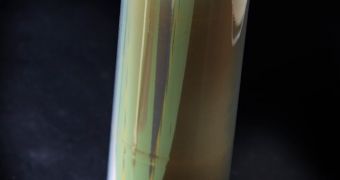The world's first environmentally friendly polarizer protective film for LCD displays used in consumer electronics comes from Taiwan, promising to provide a safer manufacturing environment and reduce production costs.
Dubbed HyTAC, the film will reportedly make the production of LCD displays 50 percent more eco-friendly, improve performance in LCD transparency and stability.
Previously, harmful toxic chemicals such as dichlormethane and methanol were needed to produce traditional TAC film, a critical component layer in LCDs.
With the rapid growth of the LCD panel market, a green alternative for both the safety of manufacturers and the environment was needed.
HyTAC uses a unique organic and inorganic silicon dioxide nano hybrid material technology as opposed to the dangerous toxic solvents traditionally used.
By not using dichlormethane, which requires using expensive processing equipment to ensure no leakage and residue in the production process, HyTAC can reduce two-thirds of the cost for exhaust recycling equipment and cut the overall manufacturing facility cost by approximately 60 percent.
The zero retardation optical property of HyTAC is suitable for use in the new generation IPS Mode LCD displays giving it extensive market application potential.
Currently, ITRI has licensed this technology to the relevant domestic manufacturers for mass production process development. The LCD display material technology will bring forth a new wave of market development opportunities for HyTAC technology.
"The ITRI HyTAC project team has succeeded in transforming the way LCD displays are produced by developing a breakthrough process for manufacturing polarizer film without the use of toxic chemicals," said Shih-Ming Chen, research supervisor at ITRI's Material and Chemical Research Laboratories.
"The highly transparent optical film and low-toxicity manufacturing processes not only conform to the trend of environmental protection, but will also replace the use of traditional TAC polarizer protective film wherever it is used," he added.
[YOUTUBE = http://www.youtube.com/watch?v=s5k0KEosYeQ]

 14 DAY TRIAL //
14 DAY TRIAL //